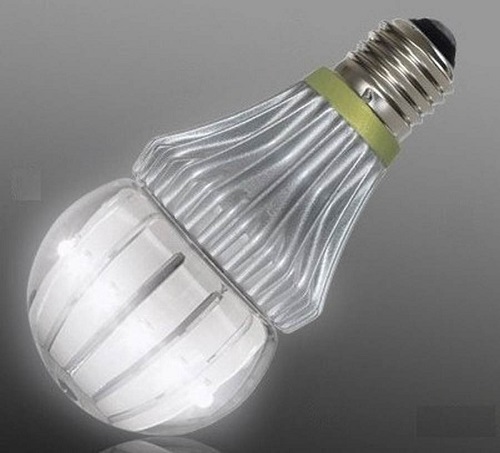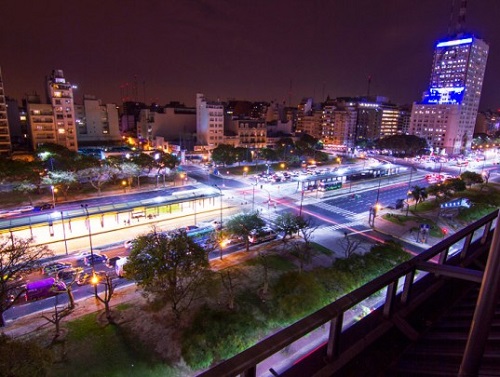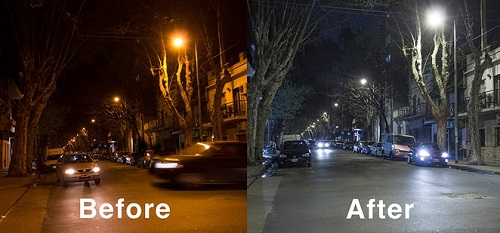LED lighting has plenty of well-known benefits; chief among them is that they use considerably less energy than normal light bulbs. They also provide a whiter light for better visibility, and have proven to last five times longer, which, in turn, means reduced maintenance costs, too.

Also useful is that they can be controlled from a web browser. Representatives for the city of Buenos Aires looked into the technology and determined that based on all of these benefits, it would be worthwhile to use LEDs to light the city’s streets.
Philips was selected as the official provider of the city’s LED bulbs, beating out a bevy of competitors, and a contract was drawn up. The project: replace 70% of the city’s current street lights with LED light bulbs.
In terms of sheer numbers, that’s 91,000 streetlights.

Philips says that this is by far the biggest deployment it has ever taken on. Despite the enormity of this project, the end goal is well worth all of the effort — city officials estimate the switch to LEDs will reduce electricity usage in Buenos Aires by up to 50%.
What’s more, having LEDs in place will allow greater control of the city’s street lighting as well. So far, 28,000 lights have been replaced, and all of them can be controlled from the comfort and convenience of an office computer.

Specifically, the lighting infrastructure is controlled by Philips CityTouch. The program allows the city’s lighting managers to log on to the program via a web browser, whereupon he / she can schedule the streetlights to turn on, turn off, or dim, based on days and times; control of the lighting system can also be adjusted in near real time too (like, say, when a midday storm comes in that darkens the sky).
Managers can also access lighting analytics via CityTouch, to allow for such analysis as energy consumption, bulb life-spans, and so on. This data, when combined with other information like, say, traffic patterns, can be used to determine if and when operators can / should dim the LED lights in order to save energy.

If you work in this field, or are interested in learning more about LED lighting design, then download Littelfuse’s LED Lighting Design Guide by clicking on the image below. The guide is interactive, so it includes both written information as well as video demonstrations. The document is thorough in its insight, and covers all of the following:
• Typical LED lighting designs for a variety of applications
• Industry standards that affect the safety and reliability of LED lighting designs
• Protection devices most often used for LED driver and power converter circuits
• Testing required to ensure compliance with industry standards
• A means of selecting protective devices so that LED lighting circuits will pass the industry-standard tests
Advertisement
Learn more about Littelfuse





